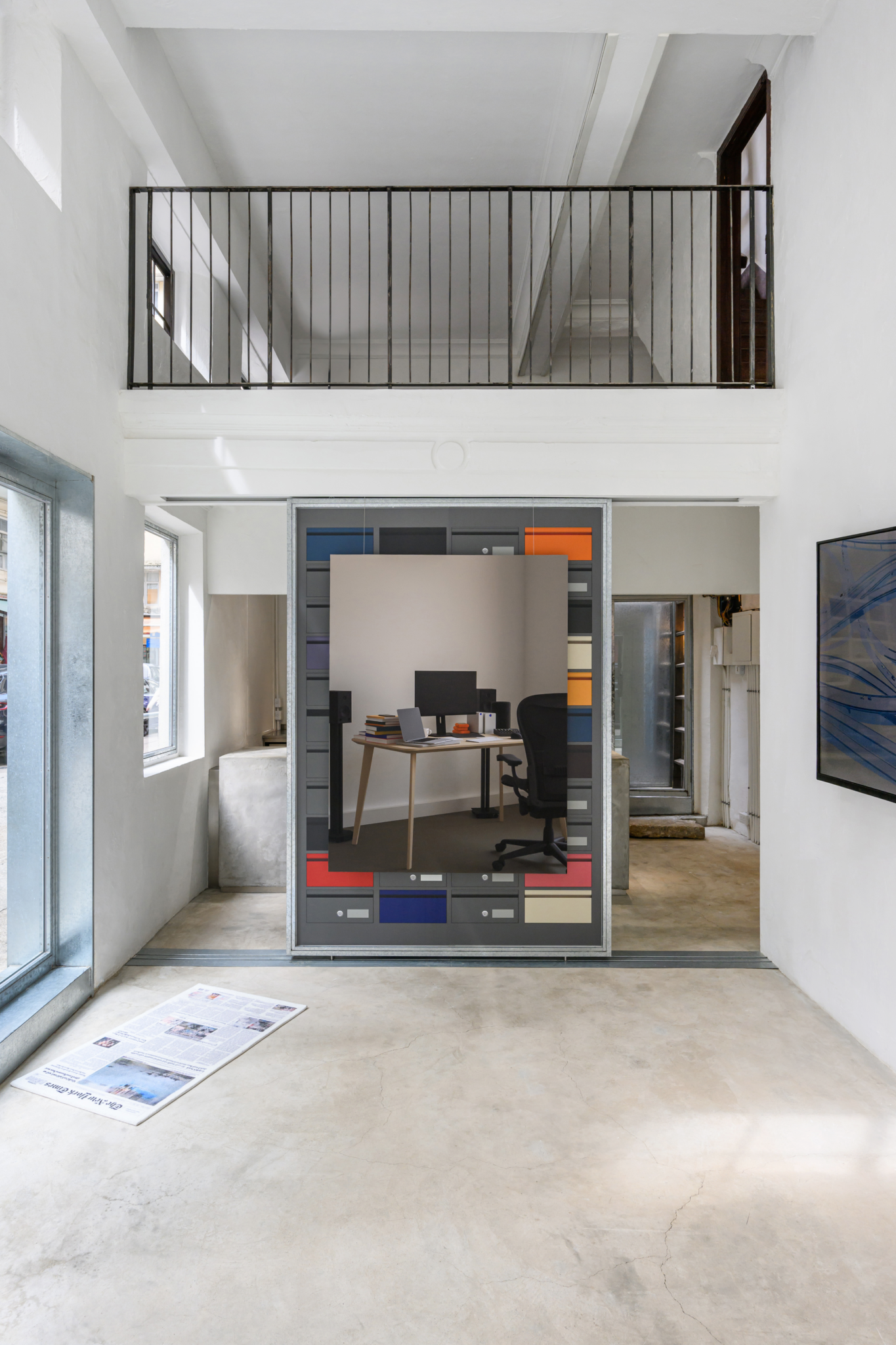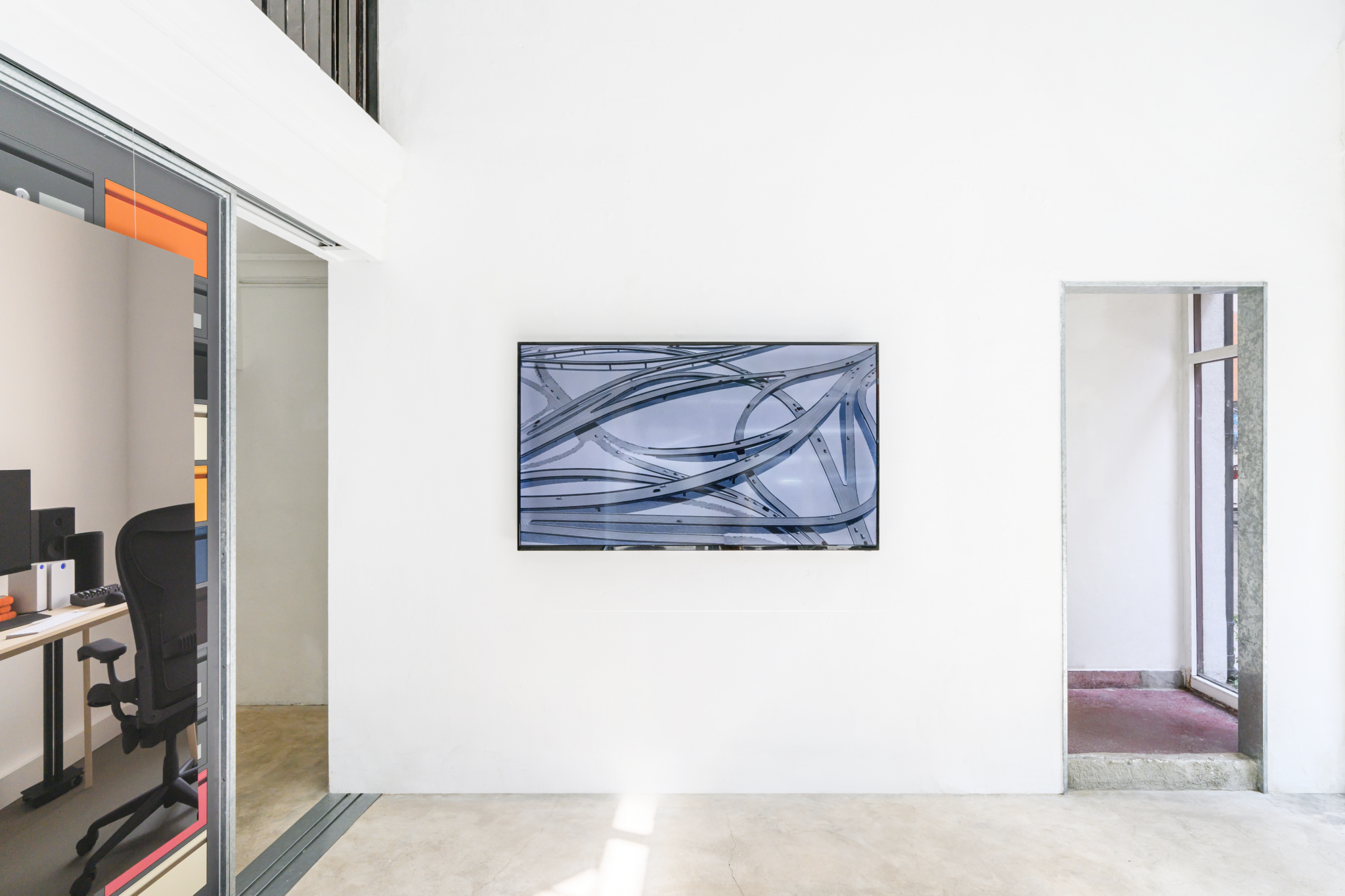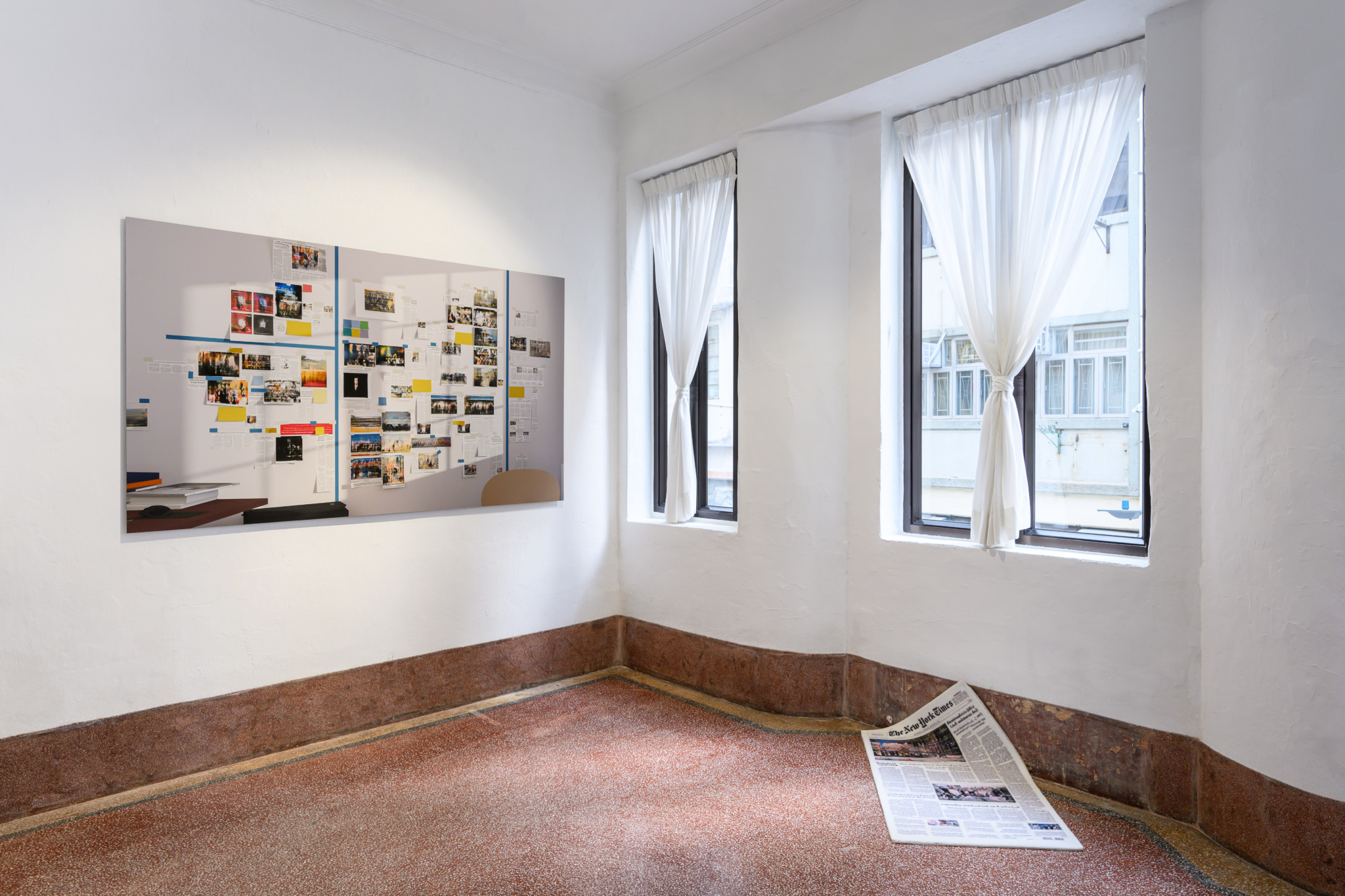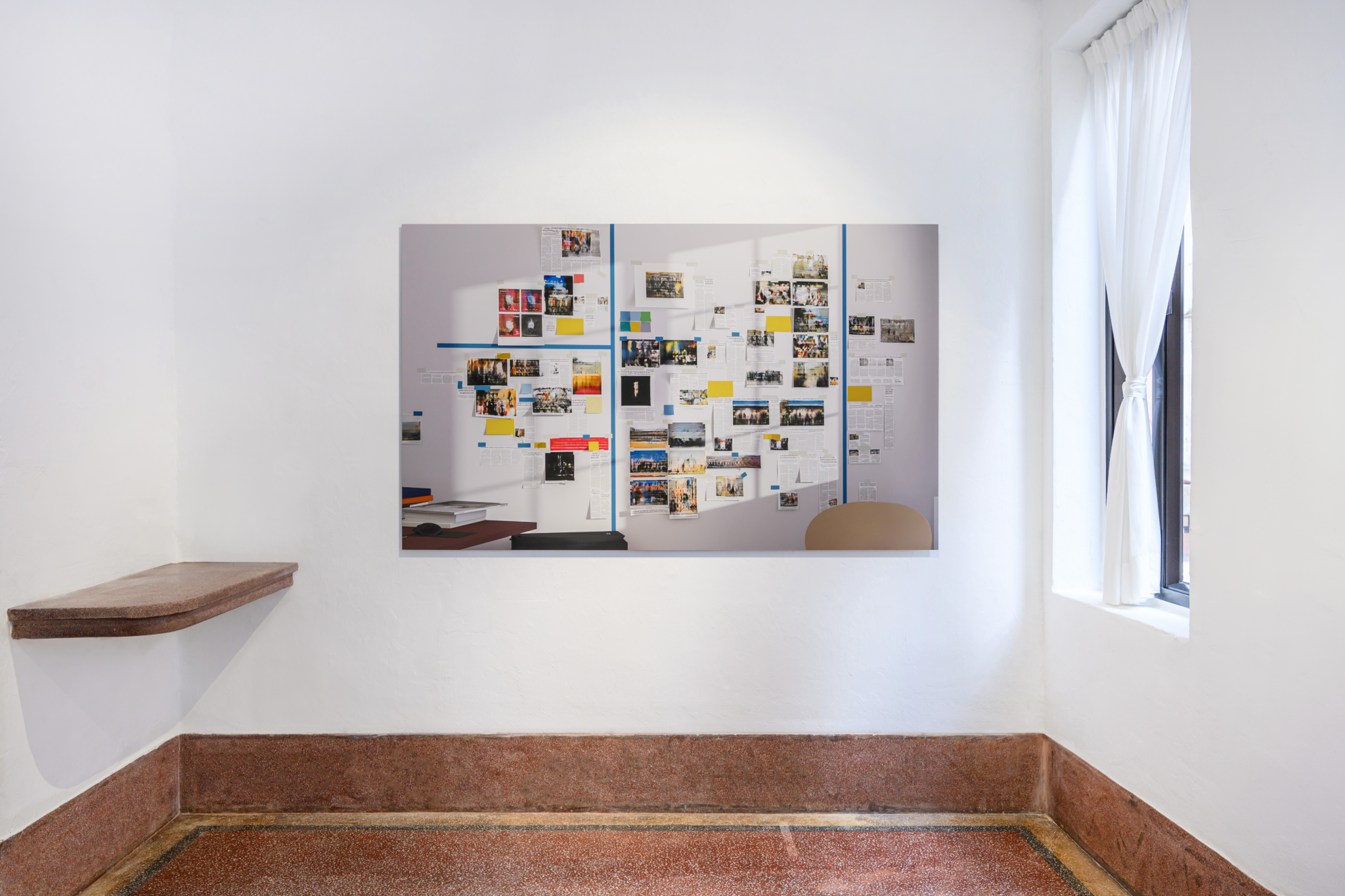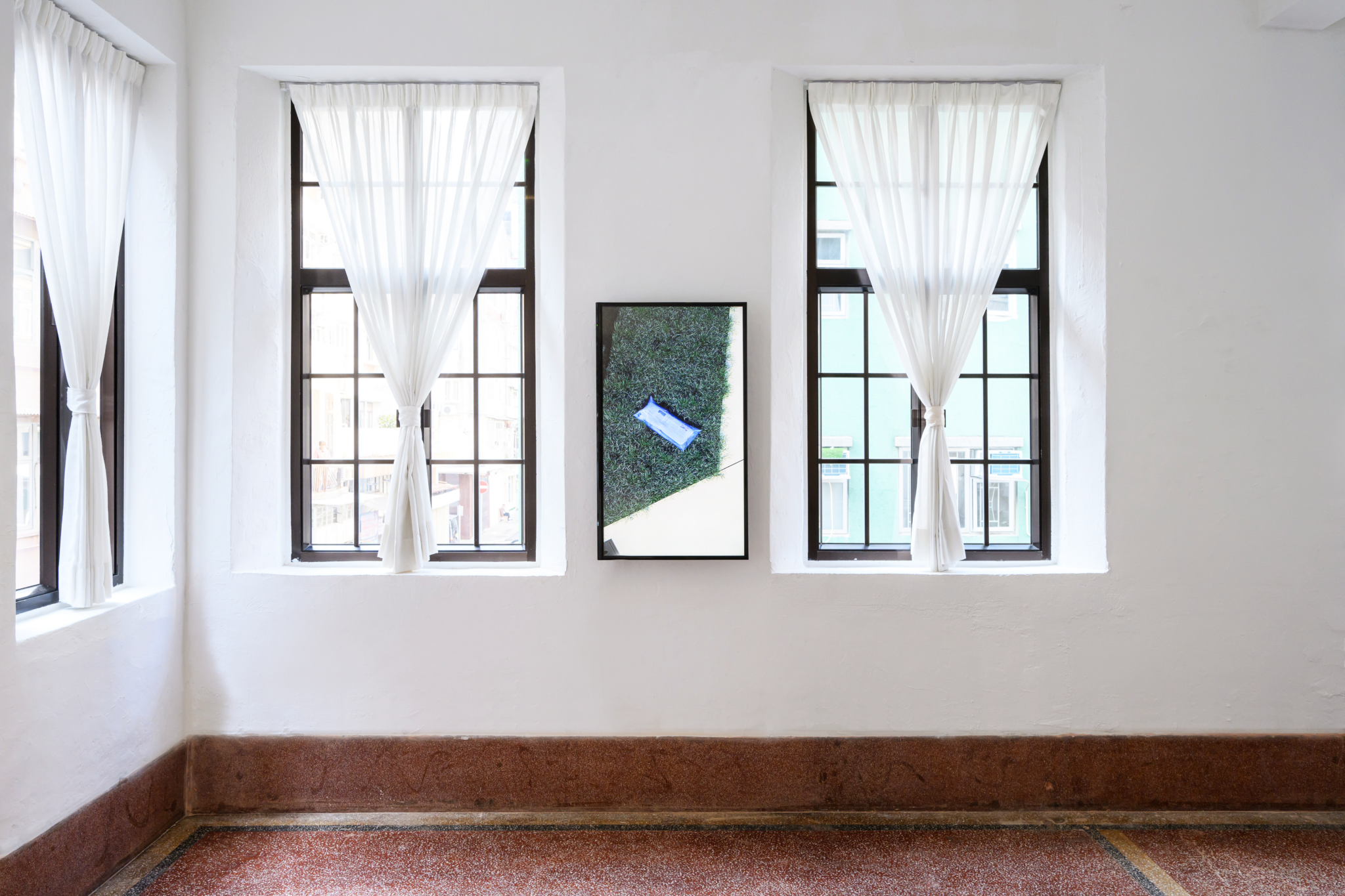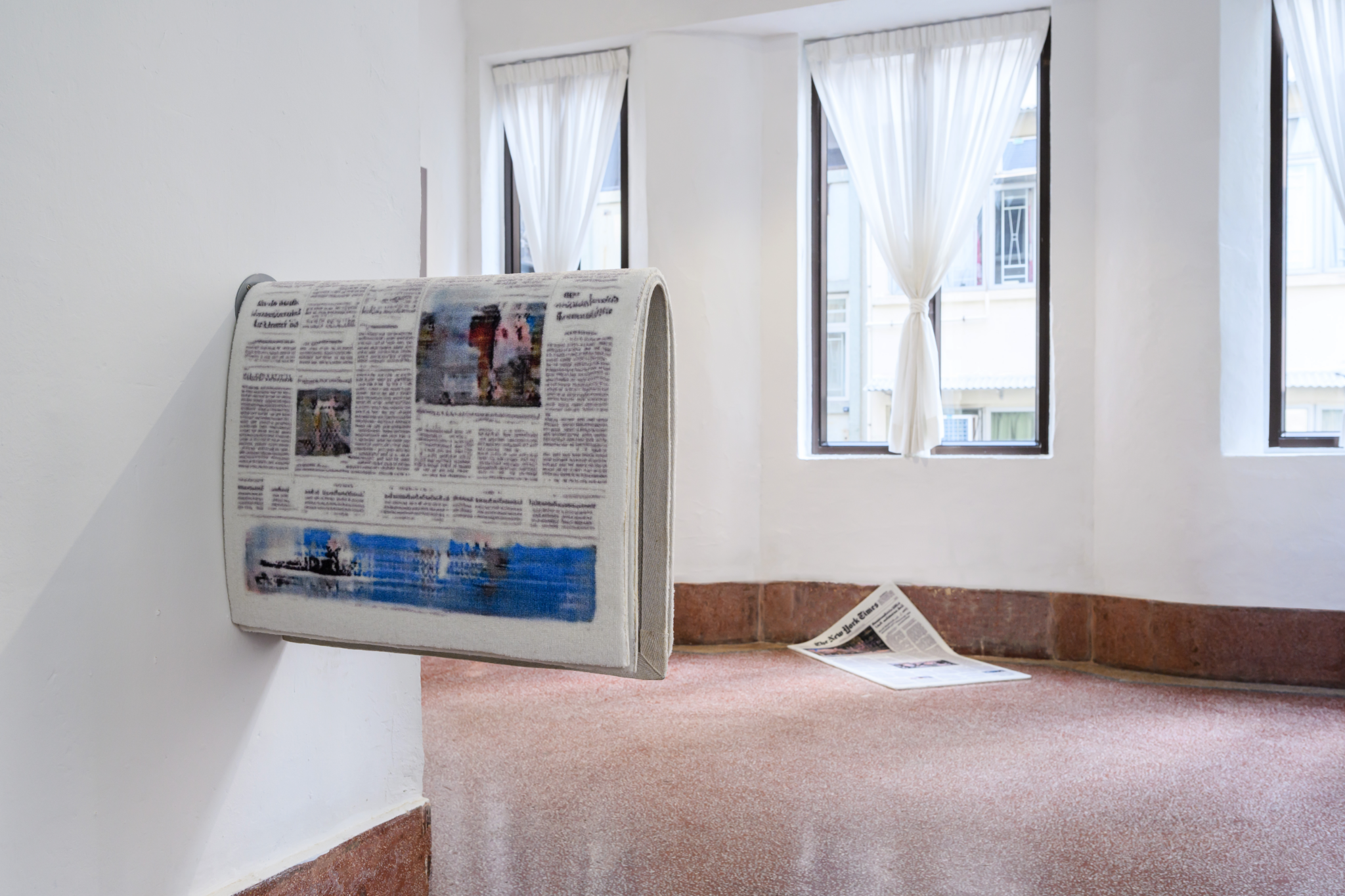Roundabout
THE SHOPHOUSE is pleased to present Roundabout, the first solo exhibition in Hong Kong by Shanghai-based artist Shi Zheng. The exhibition features isolated inspections of man-made infrastructures, recreated via varied virtual mediums, and channeled through a body of video installations and photographic works.
Using tools of video games, artificial intelligence, and digital rendering, Shi Zheng reduces reality into pure logical learnings. The artist removes the traces of human subjectivity from inherently social objects such as newspapers, living spaces, and transportation networks, crafting familiar imagery through the lens of a detached observer. Underlined with heightened senses of absence and presence, the artworks also simulate a tranquil passage of time, yet in a vacuum that is severed from time and space. As if moving around and around a roundabout, the presented realities develop continuously - without fail, change, nor an end.
The From the Film Set of Alphaville series is a collection of digital replicas of the artist'sreal-life studio, simulated through computer software. The artist pays tribute to Jean-Luc Godard's film “Alphaville” in the title, while using the "film set" to metaphorically represent the artist's own studio environment. The empty chair in the image suggests the owner's absence and highlights the presence of various devices on the table.Although the screens are not lit up, the hard drive lights reveal the machines' hidden operations, emphasizing a feeling of "machines in attendance while human beings are unaccounted.”
In the series Hovering at the Convergence of Entrances and Exits which consists of 24video works, the artist directly uses the coded game as a carrier to nestle metaphors of the virtual world and creative space in the idea of the sandbox. He appropriated the satellite imagery of particular locations that he chose on Google Earth and reconstructed the corresponding virtual scenes in Cities: Skylines. Each video focuses on an architectural scene simulated by the artist, primarily overpasses and highways,indicating variant examples of a single type of industrial infrastructure. The artist aspires to new objectivity with the help of the machine's eye. In this progressive logical sequence-objects, maps, games, simulations, screens, and then viewers-he reveals the"remote presence" of the architecture while at the same time completing the gradual abstraction of the viewed object.
Frosty Morning (2019) took the artist's research on machine learning and neural networks as a point of departure. In his practice, an artificial neural network was trained through sequence of frames of video to predict and generate images of the future. The artist collected front pages of The New York Times from the last six years, and transformed them into a dataset in chronological order to train the neural network.During the process, he reflected on data as well as the linear narrative of images. After extensive iterative learning, the neural network evolved into a "newspaper generator"that could infinitely produce contents, beyond comprehension though. The linear arrangement of the dataset and the root design of the systematic framework determined that the nature of the neural network's actions was trying to predict the future.
As a continuance of the Frosty Morning series, this time the artist installs the moving images of The New York Times generated by the neural network in computer-simulated scenes of daily life. The scenes mostly originate from pictures in his collection. In this particular context, the newspaper, despite being the visual core of the work, seems more like a daily scene that we encounter inadvertently.
Frosty Morning is a multi-channel video installation generated by Neural Networks,which are rhythmic structures made by human beings that simulate our brain and nervous systems. After the artist’s research on Machine Learning and Neural Networks,an Artificial Neural Network is trained to “read” the front page of The New York Times from the last 6 years. By imitating the data set, it starts to render the newspaper,generate blurred image, and approach the form of reality, but never realizing the legible content. As a perpetual newspaper generator or a machine trying to predict “the future”,the work seems to reflect the reasonable and overwhelming world in the present.
Aesthetically, the moving image generated by AI somehow is reminiscent of abstract landscape paintings. From a technical perspective, the landscape corroded by AI is what we call the “latent space”, the high-dimensional space that is invisible between the form of history and memory. In Frosty Morning, the passage of time brought by the moving image has transferred this concept to the “latent time” which is outside of human time and bigger than the nature time.


